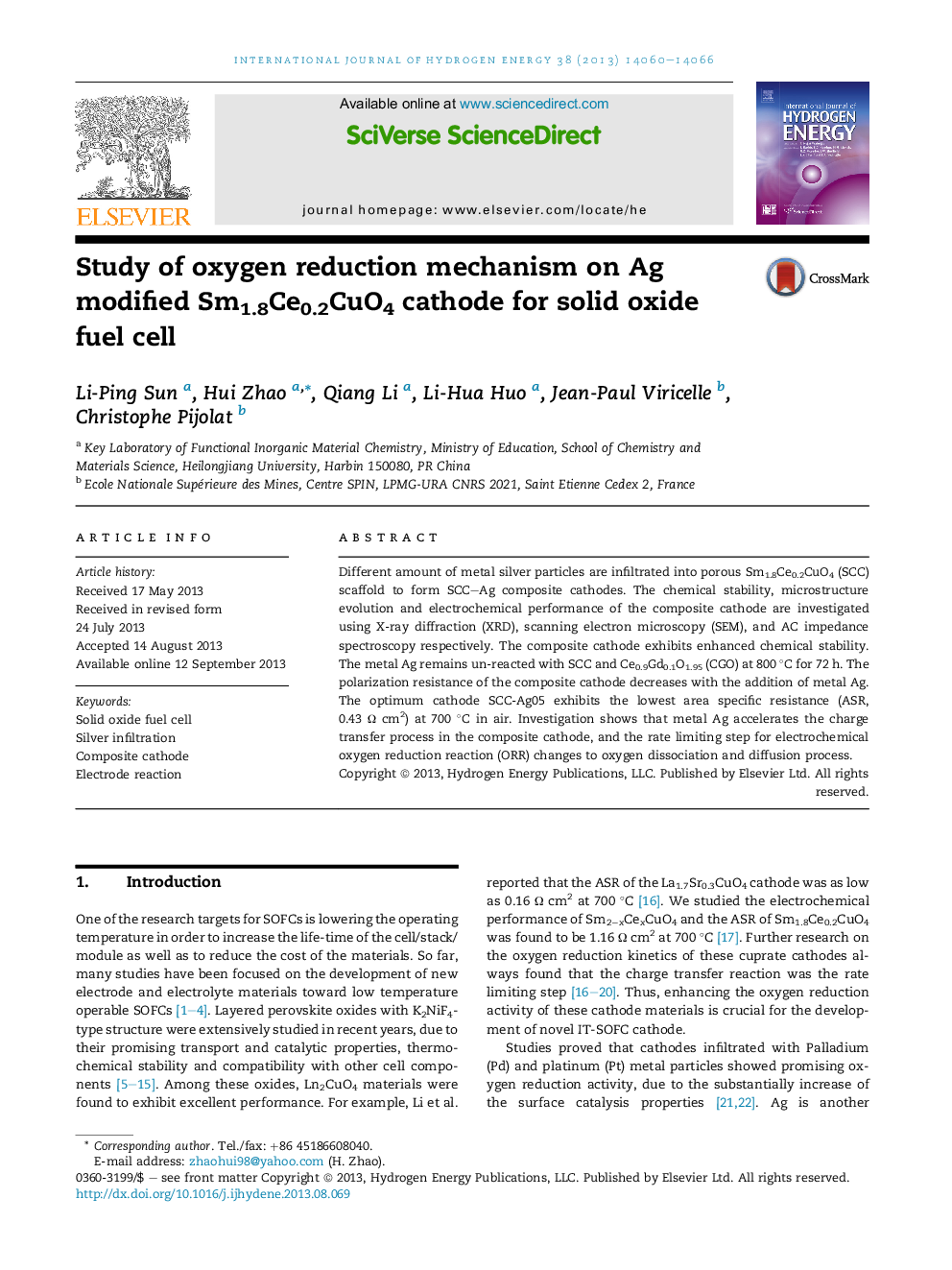| Article ID | Journal | Published Year | Pages | File Type |
|---|---|---|---|---|
| 1273076 | International Journal of Hydrogen Energy | 2013 | 7 Pages |
•Metal silver particles infiltrated Sm1.8Ce0.2CuO4 composite cathodes are prepared.•The ORR mechanism changes with the Ag infiltration.•The charge transfer process is promoted by the Ag particles.•The reaction rate limiting step is oxygen dissociation and diffusion process.
Different amount of metal silver particles are infiltrated into porous Sm1.8Ce0.2CuO4 (SCC) scaffold to form SCC–Ag composite cathodes. The chemical stability, microstructure evolution and electrochemical performance of the composite cathode are investigated using X-ray diffraction (XRD), scanning electron microscopy (SEM), and AC impedance spectroscopy respectively. The composite cathode exhibits enhanced chemical stability. The metal Ag remains un-reacted with SCC and Ce0.9Gd0.1O1.95 (CGO) at 800 °C for 72 h. The polarization resistance of the composite cathode decreases with the addition of metal Ag. The optimum cathode SCC-Ag05 exhibits the lowest area specific resistance (ASR, 0.43 Ω cm2) at 700 °C in air. Investigation shows that metal Ag accelerates the charge transfer process in the composite cathode, and the rate limiting step for electrochemical oxygen reduction reaction (ORR) changes to oxygen dissociation and diffusion process.
Graphical abstractFigure optionsDownload full-size imageDownload as PowerPoint slide
